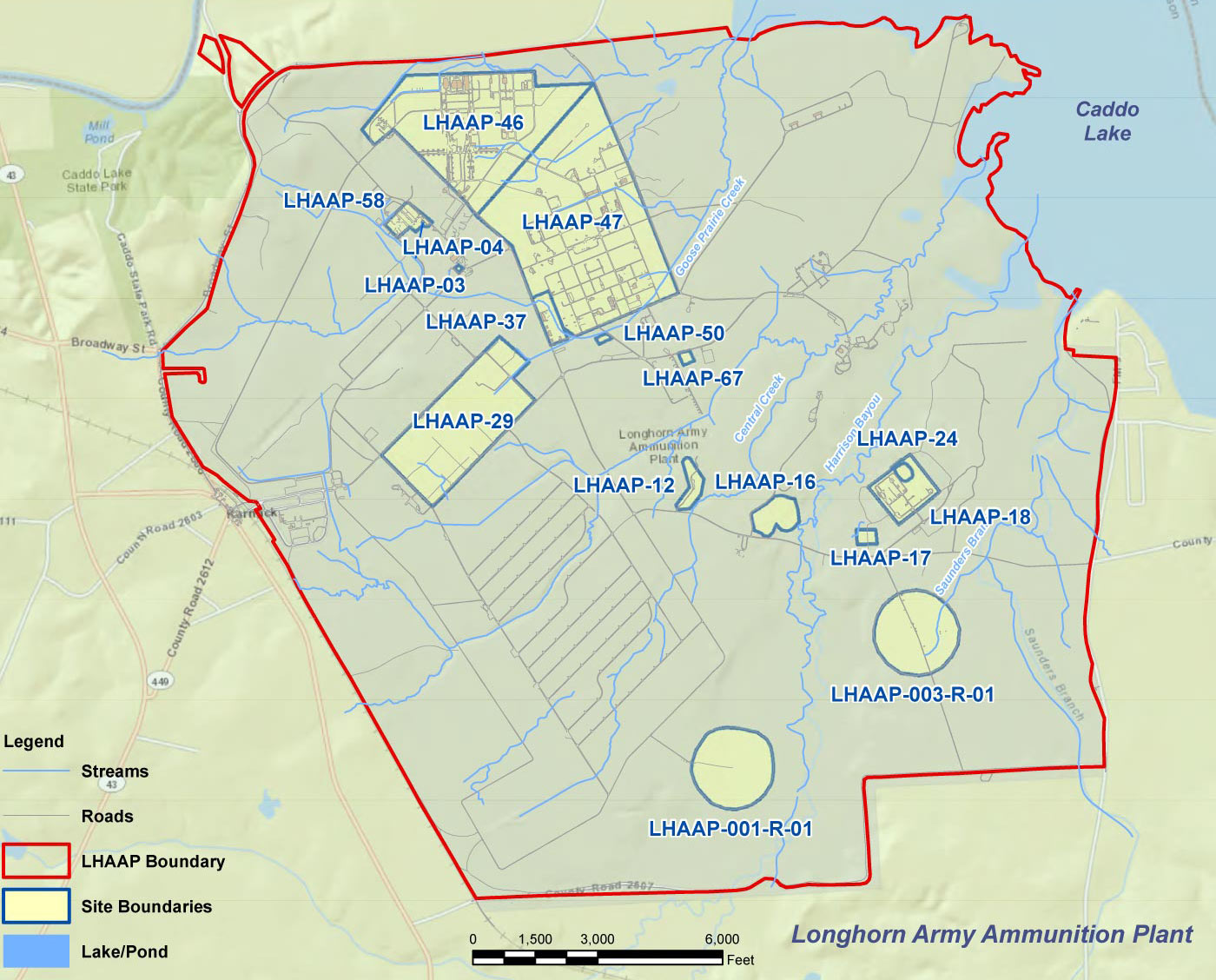Longhorn Army Ammunition Plant
Environmental Restoration Program
LHAAP-17
Site Description/History
LHAAP-17, also known as the Burning Ground No. 2 / Flashing Area, is a 3.9-acre site located within a heavily wooded section in the southeastern portion of LHAAP (Figures 1-1 and 1-2). The site is located between Avenue Q to the south and Harrison Bayou to the north. The site has two 200-feet by 350-feet cleared areas, separated by a gravel access road, Scudday Avenue. The site is covered with grass and scattered brush, has been graded above the surrounding terrain, and is relatively flat.
LHAAP-17 was used as a burning ground from 1959 through 1980. Bulk trinitrotoluene ( TNT), photo flash powder, and reject material from Universal Match Corporation operations were burned at LHAAP-17. In 1959, the materials removed from the former TNT Production Area ( LHAAP-29) and the former TNT Waste Disposal Plant ( LHAAP-32) during demolition were burned and/or flashed at LHAAP-17. The site was used as a flashing area to decontaminate recoverable metal byproducts until 1980, when it became inactive. Burning trenches were located around the inside perimeter of the previously fenced area and within the open area on the western boundary of the site. As each trench filled with ash, it was covered and the site was allowed to re-vegetate.
Remediation Activities
The environmental media (soil, groundwater, surface water, and sediment) at LHAAP-17 have been the subject of numerous investigations to identify potential contamination. The soil and groundwater at LHAAP-17 may pose a risk for the hypothetical future maintenance worker, and the soil may pose a risk for ecological receptors.
The Final ROD was finalized in September 2016 with a selected remedy of Excavation and Offsite Disposal of Soil, Groundwater Extraction, Monitored Natural Attenuation ( MNA) and implementation of Land Use Controls ( LUCs).
Remedial Design/Remedial Acton Work Plan ( RD/ RAWP) was completed in March 2019.
Contaminants of Concern
Perchlorate, TCE, 1,1- DCE, 1,1- DCA, 1,2- DCA, and VC in groundwater. Perchlorate, 2,4,6- TNT, 2,4- DNT, and 2,6- DNT in soil.
Current Phase
Remedial Action Construction ( RAC) began with excavation of soil in August 2019 and is expected to be completed in 2022.
Future Phase
Completion of RAC and continuation of Remedial Action – Operation ( RA-O).
